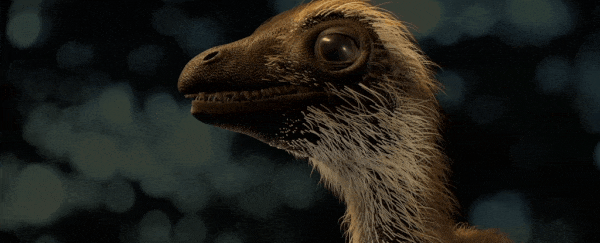Teeth-rattling roars. Earth-shaking stomps. Teeth as long as your forearm. Claws as big as your hand. The mighty Cretaceous king of the 'tyrant lizards', Tyrannosaurus rex - and isn't it just the most adorable thing you have ever seen?
Okay, this obviously isn't a real video of a baby T. rex. It's a reconstruction by palaeontologists at the American Museum of Natural History, showing what they think the wee things might have looked like: like a fluffy little baby bird with tiny chompers.
Historically, tyrannosaurids (the family of theropod dinosaurs to which T. rex belongs) have been depicted like reptiles, with rough, scaly skin. Although in recent years evidence has surfaced that some earlier tyrannosaurids were feathered, fossilised skin impressions from T. rex show little to no evidence of feathers.
Palaeontologists believe they may have been partially feathered, around the neck area. And because dinosaurs resemble birds in quite a few ways, feathers are definitely plausible.

Although we don't have a lot of baby T. rex remains to study, it's not impossible that they hatched with baby fluff to keep their little growing bodies warm, as well as camouflaged for safety.
As they grew, and their skins thickened, perhaps they wouldn't have needed their camouflage feathers any more - after all, there weren't a lot of predators in the Cretaceous that could take on a T. rex, so it didn't really need to hide.
It's possible we'll never know; maybe baby T. rexes were naked and scrawny, like a hatchling songbird, instead of already covered in feathers as they emerge from the egg, like a chicken or an ostrich.
Given that the closest relatives of T. rex that are alive today are chickens and ostriches (and let's not forget the time scientists strapped plungers to chicken butts to study how theropods walked), we know which one we'd be banking on.
The baby T. rex was constructed as part of the American Museum of Natural History's big exhibition focusing entirely on the dinosaur, T. rex: The Ultimate Predator, which opens on Monday, 11 March and closes on 9 August 2020.
